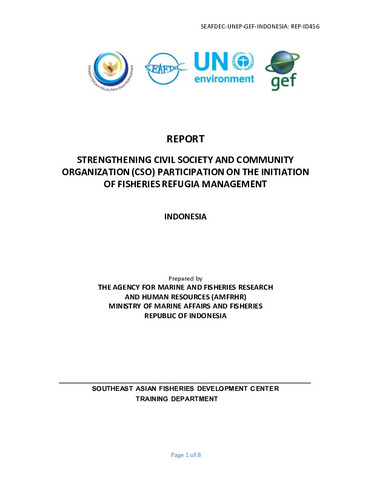Strengthening Civil Society and Community Organization (CSO) Participation on the Initiation of Fisheries Refugia Management
抄録
The identification of the potentially impacted community post to the Fisheries Refugia had been conducted during the socio-economic study. The existing communities were categorized into two components, i.e., primary and secondary stakeholders. The primary stakeholders are composed of several parties who put their direct interest in the resources and areas. These parties were the fishermen, collectors, exporters, and processors (post- harvest industry). The secondary stakeholder was the parties that belonging an indirect interest in the resources and areas, i.e., MMAF, local governments (Provincial, District, and Village), NGOs, and Universities.
Among the fisheries stakeholders, the fishermen communities were the main concern regarding the Fisheries Refugia Implementation. The main record from several meetings was regarding the existence of the livelihood for the local fishermen existed on fisheries
refugia sites when the Fisheries Refugia-based management was established. This resistance statement came from the local authority representing the groups of fishermen. Nowadays, the fishery joint business group is established locally throughout Indonesian fisheries communities developed by the MMAF.
記述
This report is under the SEAFDEC/UNEP/GEF Project on “Establishment and Operation of a Regional System of Fisheries Refugia in the South China Sea and Gulf of Thailand”
Citation
AMFRHR/Indonesia, 2022. Establishment and Operation of a Regional System of Fisheries Refugia in the South China Sea and Gulf of Thailand, Strengthening Civil Society and Community Organization (CSO) Participation On the Initiation of Fisheries Refugia Management. Southeast Asian Fisheries Development Center, Training Department, Samut Prakan, Thailand. FR/REP/ID56, 8 p.

